University Essay: Analysis of Dictatorship and Transition to Democracy
VerifiedAdded on 2022/08/08
|5
|1007
|267
Essay
AI Summary
This essay provides an analysis of the transition from dictatorship to democracy, exploring the contrasting ideologies and their effects on citizens. It examines the role of human rights, the impact of totalitarian governments, and the significance of freedom of expression. The essay discusses the effectiveness of nonviolent resistance, drawing on examples such as Mahatma Gandhi's movement and the Iranian Revolution, while also acknowledging instances where it has been less successful. The analysis incorporates perspectives from various scholars, including Sharp, Worth, Gregg, and Öztürk, to provide a comprehensive understanding of the complexities involved in transitioning from oppressive regimes to democratic systems. The study also highlights the importance of strategic planning and coordinated efforts in achieving successful nonviolent movements, and it notes the positive trends in global political environments while acknowledging the continued existence of repressive governments in certain regions.
1 out of 5
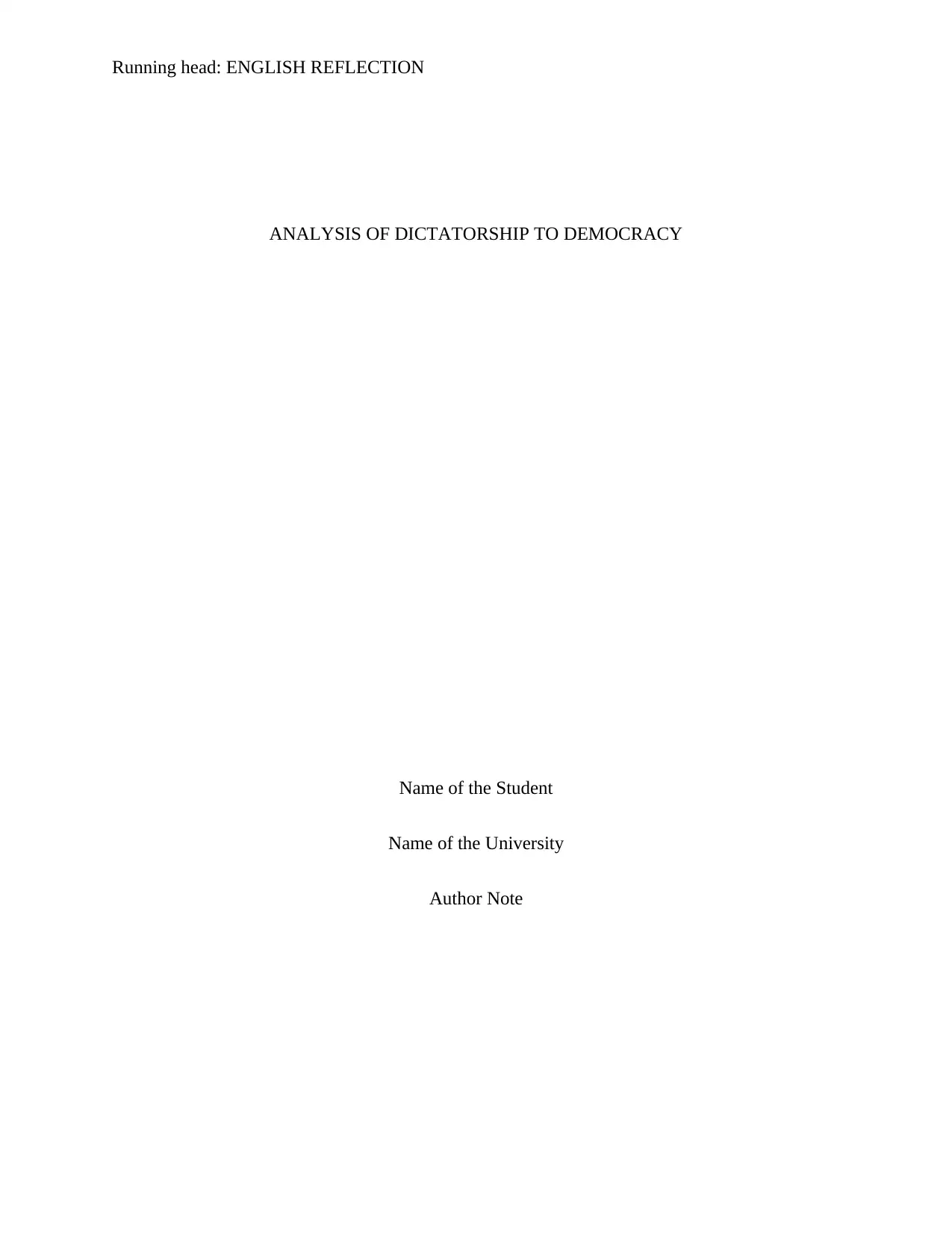
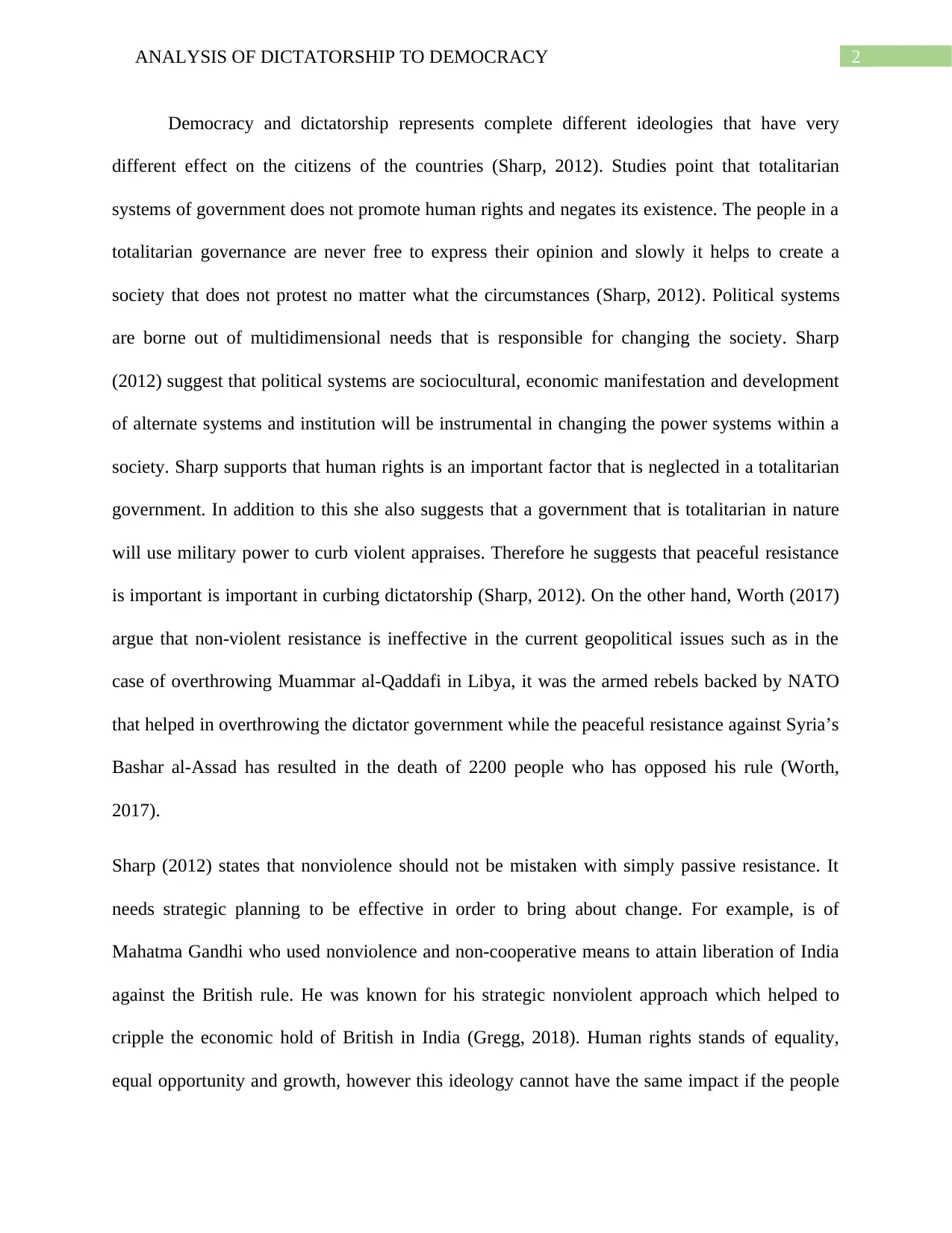
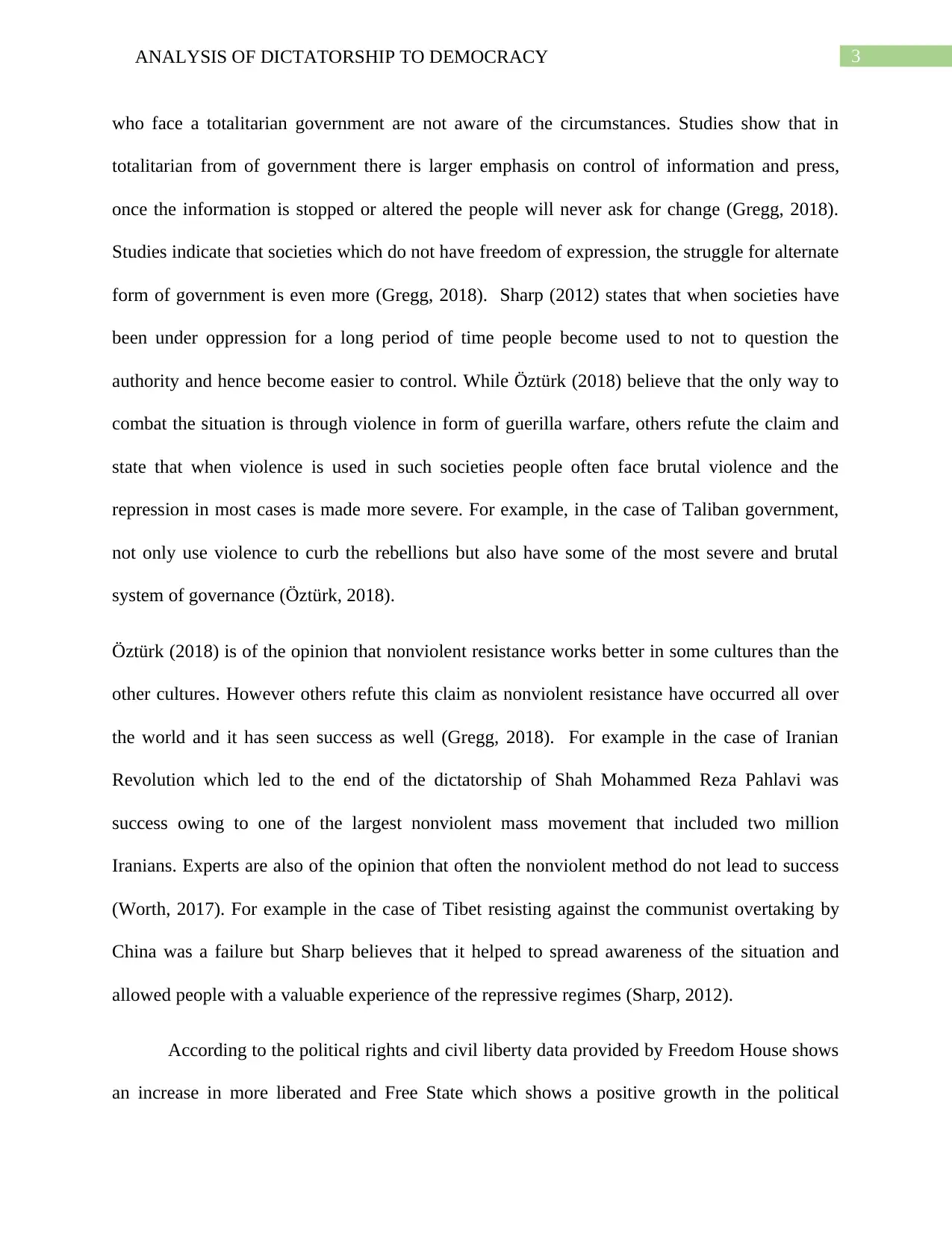

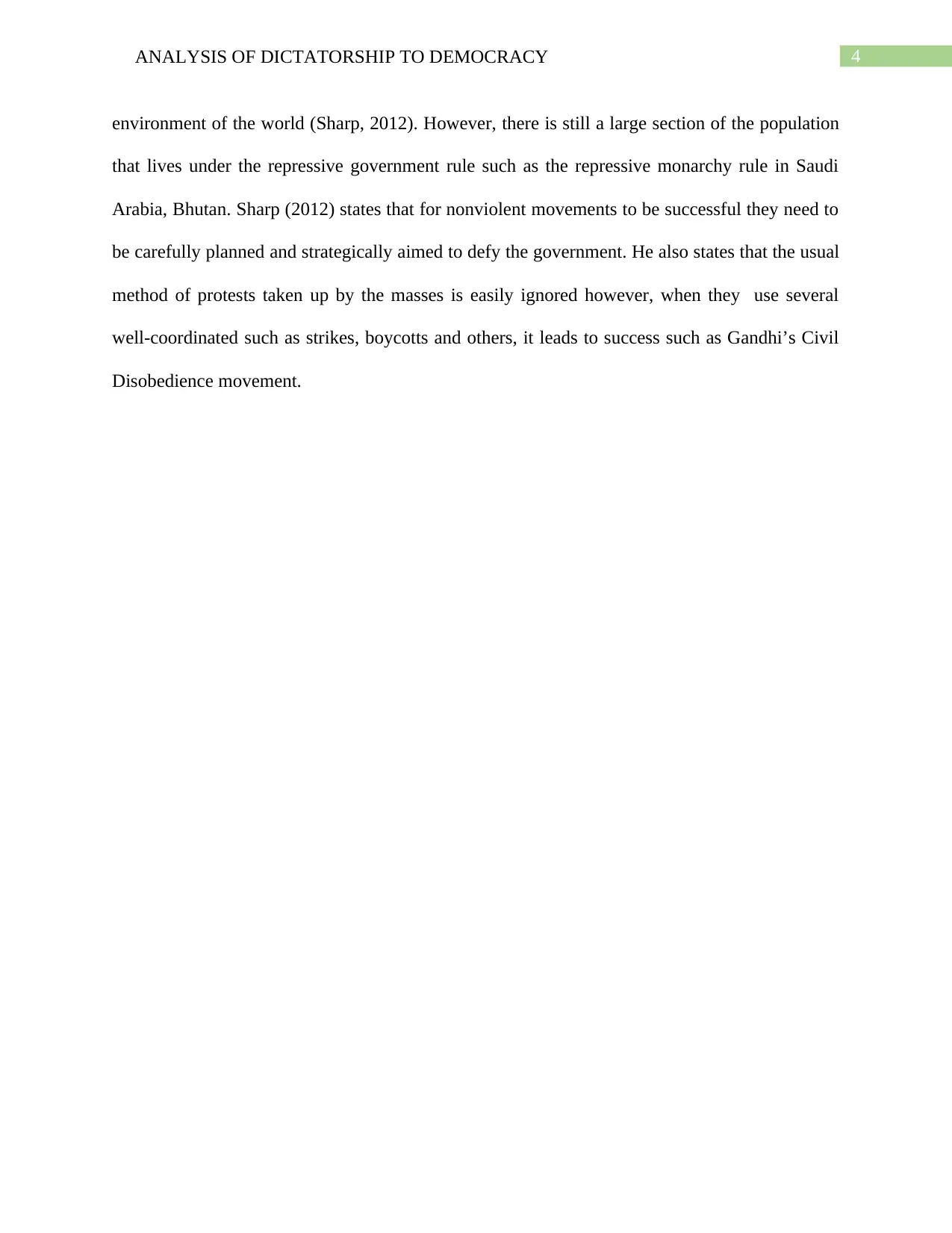
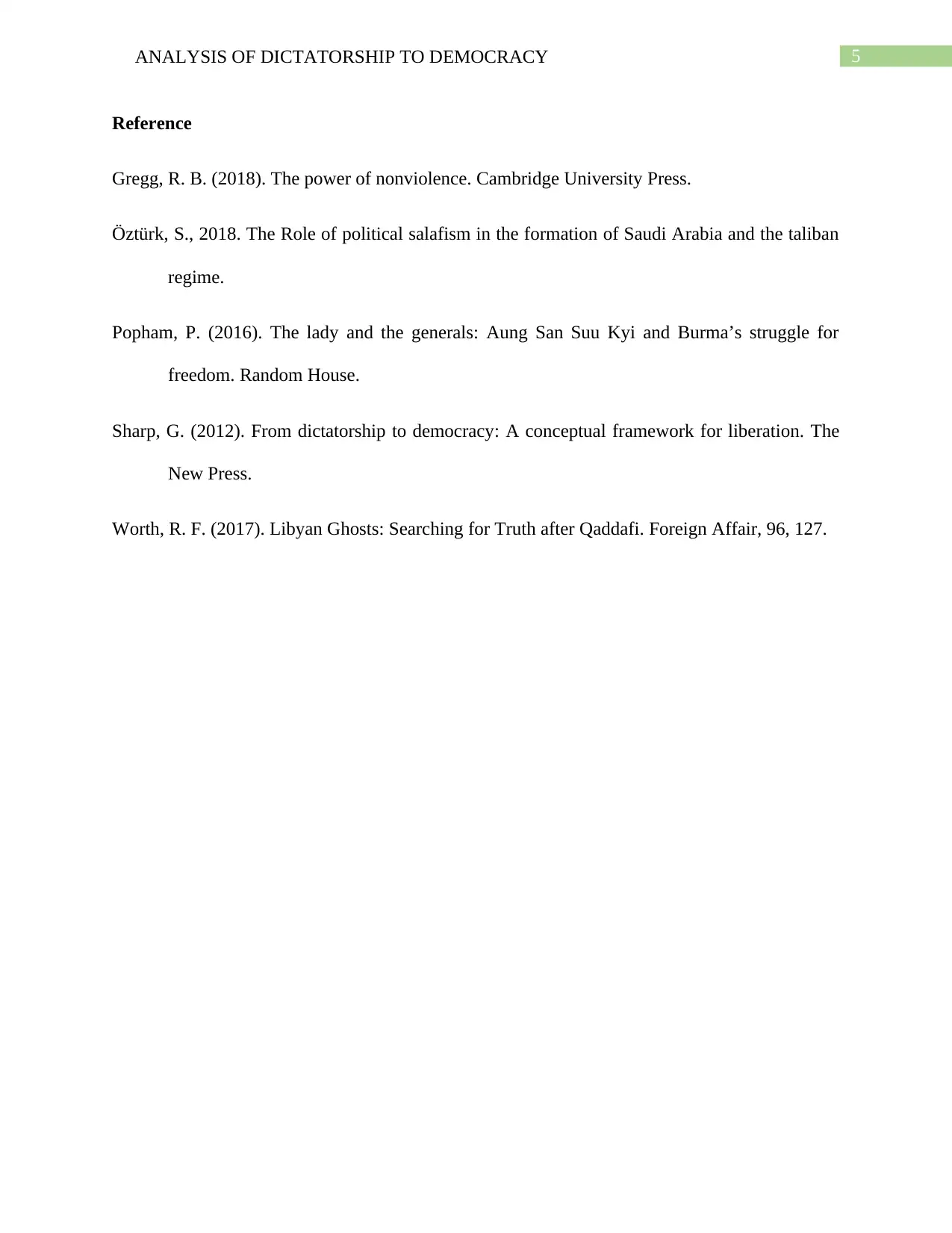

![[object Object]](/_next/static/media/star-bottom.7253800d.svg)